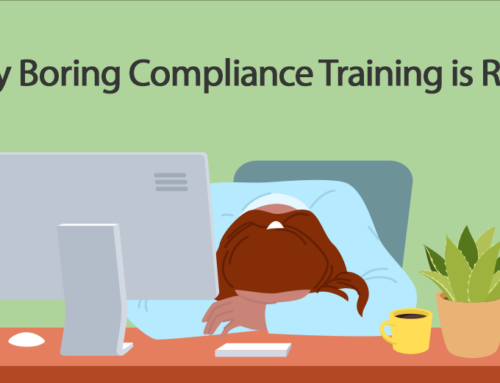How Long Is Too Long? Finding the Optimal Length for Online Corporate Training Modules
In today’s fast-paced corporate environment, attention spans are dwindling, making it crucial to design online training modules that are both engaging and concise. But what is the ideal length for a training module? And how can organizations effectively deliver longer content without losing learner engagement?
Optimal online training Length Backed by Research: Studies consistently show that shorter modules enhance learner engagement and retention. For instance:
- A study by the University of Wisconsin-Stout found that students preferred online modules under 15 minutes, noting that shorter modules helped them better grasp course content.
- Research from the University of Alabama at Birmingham indicates that online instructional modules are best received when divided into shorter segments with opportunities for interaction.
- The University of California, San Diego, recommends that online educational modules should ideally be less than 12 minutes long and no more than 20 minutes.
While much of the available research on optimal training length comes from university studies, the lessons translate directly to the corporate world.
Today’s university students are tomorrow’s employees, and the realities of attention span, cognitive overload, and engagement don’t magically change at graduation. In fact, for working professionals juggling packed calendars, the need for concise, focused training is even more critical.
Respecting learner attention isn’t just a best practice in academia — it’s essential in corporate training if we want busy employees to retain information and apply it on the job.
When Do Learners Tune Out? Learner engagement tends to decline as video length increases. Factors contributing to this include cognitive overload and decreased attention spans. Monitoring engagement metrics and gathering feedback are essential to identifying optimal online module durations for your audience.
Solutions for Longer Content: For mandatory training sessions that exceed the recommended module length, consider the following strategies:
- Microlearning: Break down the content into smaller, digestible modules. This approach allows learners to absorb information at their own pace and improves retention.
- Interactive Elements: Incorporate quizzes, polls, and interactive scenarios to maintain engagement throughout longer sessions.
- Blended Learning: Combine video content with live sessions, discussions, or hands-on activities to diversify the learning experience.
- Flexible Scheduling: Allow learners to complete training in segments over a set period, such as completing a 90-minute leadership course over two weeks.
Creating shorter, high-impact training isn’t easier — in fact, it often requires more effort and thought than producing a long, comprehensive course. It’s easy to pack in everything you know; it’s harder to distill what learners truly need to know in a way that’s clear, concise, and engaging.
As Mark Twain famously quipped:
“I didn’t have time to write a short letter, so I wrote a long one instead.”
The same principle applies to training design. Shorter courses demand more focus, sharper scripting, and better instructional choices — but the payoff is well worth it. Employees stay engaged longer, retain information better, and appreciate it when their time is respected.
Conclusion: So, what is the Optimal Length for online Corporate Training e-learning Modules? Obviously, it varies by content, but optimizing the length of online training modules is vital for maximizing learner engagement and knowledge retention. By leveraging research-backed strategies and adapting content delivery methods, organizations can ensure effective and impactful training experiences.





